Your push notification subscribers are key to your business growth and success. The more subscribers you have, the more you boost your chances for conversion, revenue, profit growth, and, ultimately, business expansion.
Push notifications enable you to stay in touch with your target customers, build audience relationships, drive user retention, enhance user experience, and boost your website traffic and conversion rates. It is now one of the key tools brands and marketers use to engage with consumers and enhance customer service.
In this article, we share with you ten (10) proven effective tips on how to increase your push notifications subscribers, with sample cases of real-life businesses using the tips successfully.
What Are Push Notifications?

Push notifications are short messages sent to users’ devices from your business’ application or website, even if users are not actively using the application or website.
Your business “pushes” information to the users in real time. This information can be a variety of content – alerts, promotional offers, reminders, news updates, and other information that should enhance their experience with your brand.
Users have to “subscribe” to these push notifications to receive them. They do this when they install your app, subscribe to receive notifications from your website, and allow notifications from your app or website on their device settings.
Types Of Push Notifications
There are four main types of push notifications: web, mobile, desktop, and wearables.
For web push notifications, any company with a website can send web push notifications after installing a web-based Software Development Kit (SDK) code from a web push service on their website. No app is needed.
Users tapping or clicking on a web push notification are taken to a pre-set URL fixed by your brand. Users can also disable receiving push notifications by configuring their browser settings.
Subscribers offers web push notifications to your website visitors. You simply install Subscribers on your site. Visitors are asked to opt-in to receive notifications from you. If they opt-in, you can then send push notifications to them anytime they have the browser they used to opt-in open, even if they’re not on your site.
For desktop and mobile push notifications, you need a developer to create an app that users install on their laptops, tablets, or phones. On iOS, opting in requires users to actively subscribe. On Android devices, push notifications are set by default unless users untoggled this option in their phones.
Wearable push notifications can be considered extensions of the messages users receive from their mobile phones. If users connect and sync their wearables, such as smartwatches to their phones, they receive wearable push notifications, too. You need a developer to build an app for your brand for wearables push notifications.
Why You Need To Increase Your Push Notifications Subscribers

For push notifications to be effective, you need to have a large subscriber base. The more subscribers you have, the better.
How To Increase Your Push Notification Subscribers
Although push notifications provide many benefits for businesses, consumers are now extremely sensitive to the push notifications they receive.
According to a HelpLama survey, 64% of users will completely stop using an app if it sends more than five weekly push notifications. The issue is not push notifications per se, but how much value you provide to your push notifications subscribers.
Here are the top ten (10) proven effective tips on how to increase your push notification subscribers in ways that enhance their experience and not run the risk of their unsubscribing from your messages:
1. Provide Value
Users need to quickly understand that by subscribing to your push notifications, they will receive something more valuable in return. This should be valuable content that’s relevant to them and their needs, and where they are in their customer journey.
Based on your customer segmentation data, you can send them exclusive deals, personalized offers, timely reminders, and important updates.
The key is to understand your target audience/market well.
For instance, many airlines now, such as JetBlue, use mobile push notifications to remind their customers when to check in. When flyers check in, they receive pleasant reminders a day before their flight departure schedules. In-flight status updates are also available for customers who have this option.
This is a good example of high-value, practical content that enhances their customers’ flying experience. This encourages customers to think positively about the JetBlue brand. This helps them consider the airline as a top-of-mind choice in their next flight bookings, assuming their flying experience went as positively.
2. Segment Your Audience
As already mentioned previously, customer segmentation is important to understand your customers better and tailor your messages to their segmented characteristics.
Segmentation involves dividing your subscribers into different groups based on their demographic characteristics, preferences, interests, behavior, and other factors important to your digital marketing campaigns.
With segmentation, you can send targeted and personalized messages to each group, increasing engagement and customer retention.
The Bump, which offers expert pregnancy and parenting advice to new parents, is already focused on its niche. Still, it promptly further segments visitors who land on their site with a pop-up notification that asks them what their journey is: whether they’re still trying to conceive, with a baby on the way, already a parent, or someone they love is pregnant.
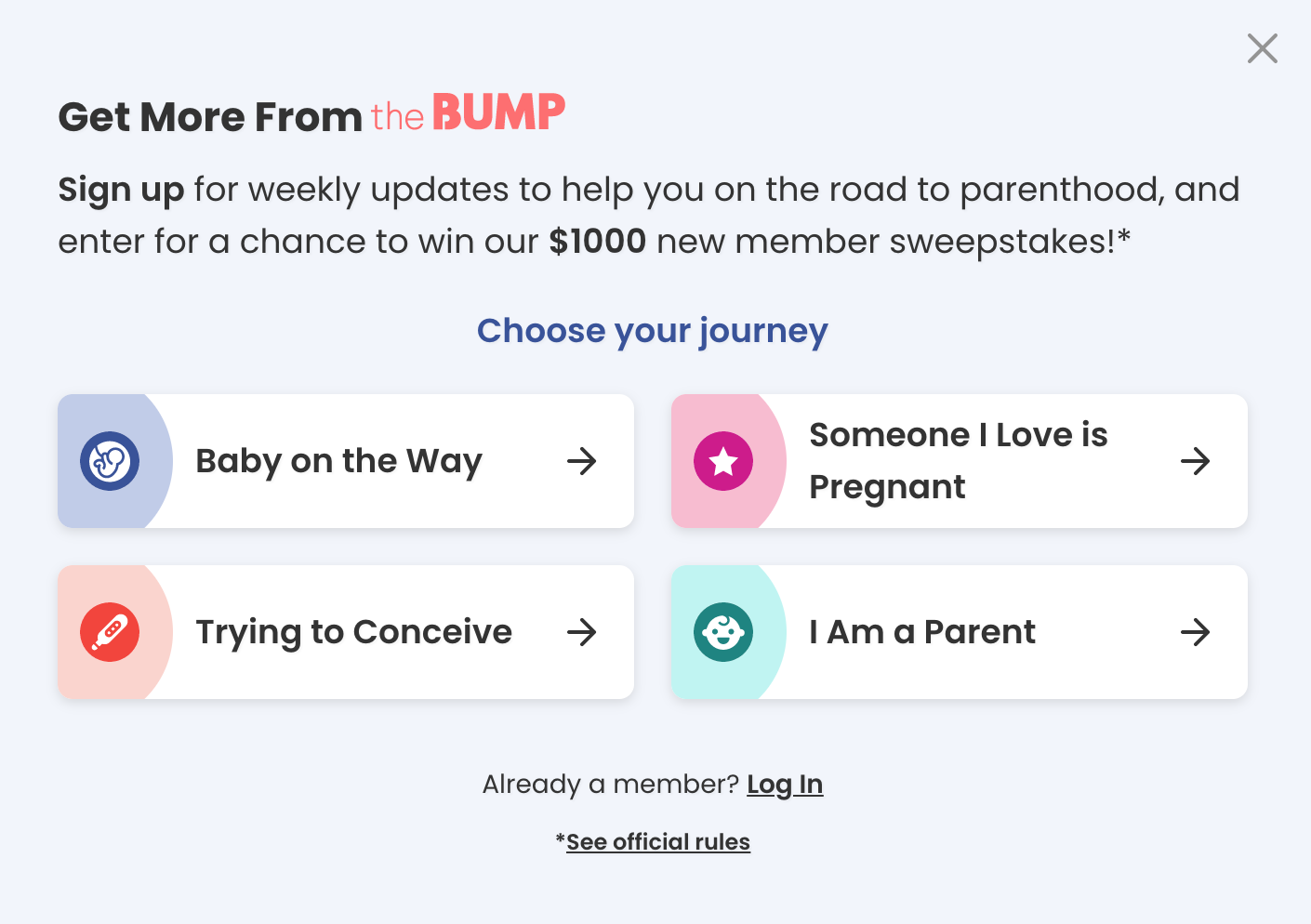
From the information they generate from this pop-up notification alone, they can already tailor their messages to the users’ more specific needs.
For instance, expecting mothers who sign up for push notifications receive messages about the size of their baby inside, using fruits as a reference point, and what to expect in the coming weeks in terms of optimizing their baby’s growth and development inside their tummies.
This is an example of setting up push notifications to audiences about something they really care about (providing value) and relevant to where they are in their journey (based on segmentation). Understandably, the subscribers would welcome updates about their unborn child compared to spammy messages from some store they foggily remember.
It also helps that their pop-up notification incentivizes subscription sign-up by including new subscribers in their $1000 new member sweepstakes (incentivize).
3. Craft The Perfect Message
Now that you know your target audiences better with segmentation and have a strategy for providing them with more value through your push notification messages, you need to write clear and compelling messages that don’t exceed character limits.
There are many tips on how to write push notification content messages, but they all boil down to these three tenets:
- They are relevant and timely. The user’s location, behavior, and/or preference triggers the notification. You can set this up with the best push notification platform for your business.
- They are personal. The push message appeals to the user as an individual.
- They are actionable. The push message is clear about what the user should do next.
In addition to these tenets, here are 10 more tips on best practices for crafting the perfect content for your push notifications:
- Tell users their input is priceless.
- Pique users’ curiosity.
- Help users meet their goals.
- Issue a challenge or make an assumption.
- Use selective capitalization for easier scanning.
- Nudge users when they go inactive.
- Remind users to complete an action.
- Present an exciting update.
- Praise users for what they’ve accomplished and how your product can help them relax now.
- Align yourself with authority (“Studies show…”).
Here is a sample push message from Tinder making an assumption and issuing a challenge, as well as piquing curiosity.
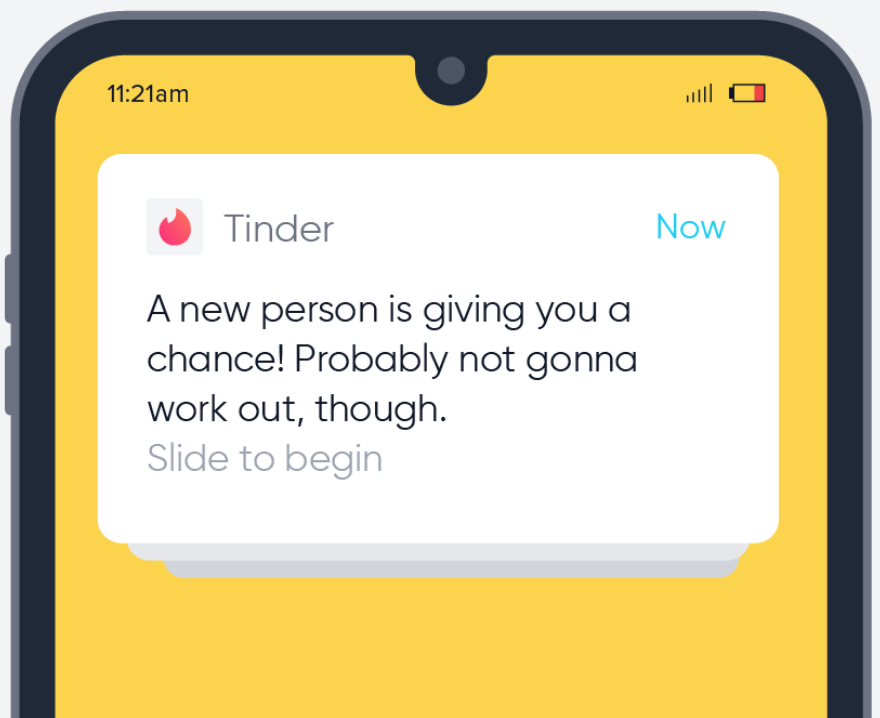
It works because it alerts the user to a new activity (relevant and timely), the tongue-in-cheek mocking message is brand-aligned (personal) and challenges the user to engage (actionable).
4. Incentivize
Offering incentives to users to subscribe to your push notifications is a powerful way to grow your subscribers.
You can offer them exclusive content, offer them a discount, or sign them up for sweepstakes (just like what The Bump did in the sample case on segmentation). This gives them a good reason to opt-in to your push notifications and stay engaged with your brand.
eXtra, Saudi Arabia’s leading consumer electronics retailer, previously used re-targeting emails to engage with mobile users. Since they switched to push notifications, they experienced dramatic improvements in revenues.
For example, when users visit their site, a pop-up notification like the one below appears. It offers a time-sensitive 20% discount exclusive for cardholders of two partner banks. This encourages users to click for more information and register an account to receive similar notifications, as well as shop at the site within the deadline for the offer.
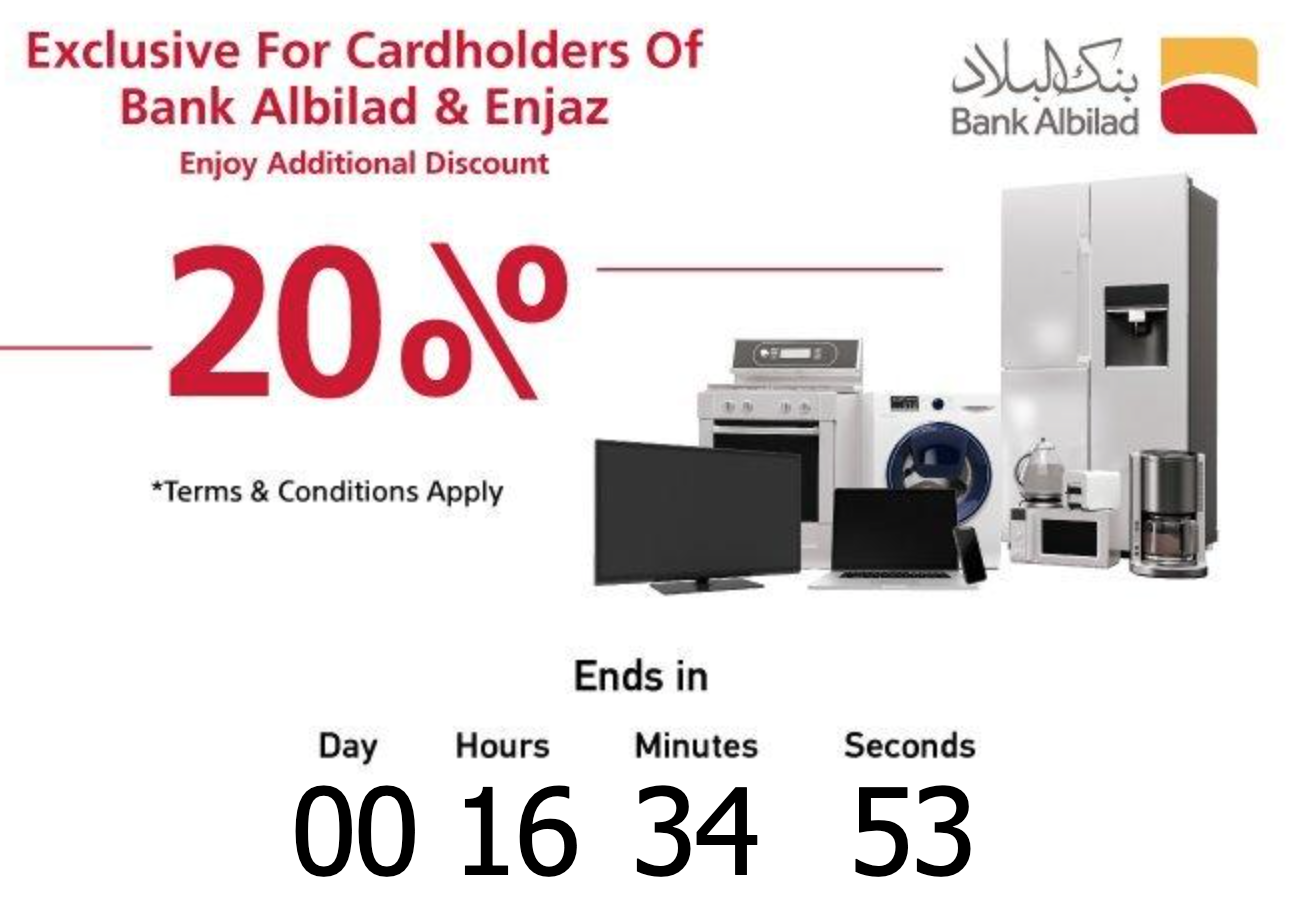
With their switch to push notifications, eXtra experienced 100% year-on-year mobile growth. Within six weeks of push notifications adoption, subscribers engaged four times more and spent twice as much time on their site.
5. Time It Perfectly
Timing is critical in sending push notifications. You don’t want to annoy users by sending them too frequent notifications and/or sending them at the wrong time of the day.
Analyze your data for when your subscribers are most active, and optimize your notification schedule aligned with this data.
Generally, according to a VWO Engage survey, people like to receive push notifications in the morning (38.66%), on weekends (38.38%), and in the evenings, after work (36.69%).
However, based on the same survey, when looking at the senders’ push notifications schedule by the top five sending industries, it’s interesting to see how their sending schedules don’t exactly match the users’ preferred schedules:
- E-commerce: 3 pm to 4 pm Wednesdays
- Media, publishing, and blogging: 9 am to 10 am Tuesdays
- Banking, financial services, and insurance (BFSI): 3 pm to 5 pm Tuesdays
- Software and Software As A Service (SaaS): 4 pm to 7 pm Wednesdays
- Digital marketing agencies: 2 pm to 7 pm Tuesdays
VWO Engage’s analysis points out the fact that only 20% of the survey participants’ push notifications are segmented. This should be a basic marketing strategy to customize messaging and deliver messages in a language that would resonate with the intended recipients.
It also found that only 38% of survey participants use rich features, which is missing an opportunity to engage more of their subscribers. Rich formats improve reaction rates by 25%.
This also highlights the need to conduct your own customer segmentation and track user behavior to find the best times to send push notifications to your subscribers.
6. Use Social Proof (FOMO)
Social proof is the phenomenon where people copy and follow other people’s actions to display accepted or correct behavior.
This is based on the theory of normative social influence, where descriptive normative beliefs were found to be more predictive of behavior than other relevant beliefs. This also appeals to people’s fear of missing out (FOMO) on what others are already enjoying.
If users see that others – especially influencers – are subscribing to your push notifications and find value in them, they are more likely to also opt-in. According to a Nielsen study, 70% of customers trust a recommendation from a person they don’t know, and 92% trust advice from their peers.
You can use social proof by highlighting the number of subscribers you have (wisdom of the crows) and/or featuring industry experts or influencers that your subscribers follow. Other types of social proof are:
- case studies;
- earned media (when the press publishes positive reviews about your brand or products and services);
- existing customers’ or clients’ logo design;
- positive customer reviews;
- social media (such as reshares, engagement, and a blue checkmark on your social media account);
- embedded LinkedIn company feed to showcase professional credibility and real-time company updates; and
- testimonials.
TrustPulse, a social proof app, is used by over one million websites. TrustPulse customers report increased conversions by as much as 15%.
For example, when visitors land on their page, users will promptly see a pop-up notification informing visitors that some person has just signed up for TrustPulse. It sets the example of how social proof can be leveraged to increase subscriptions.
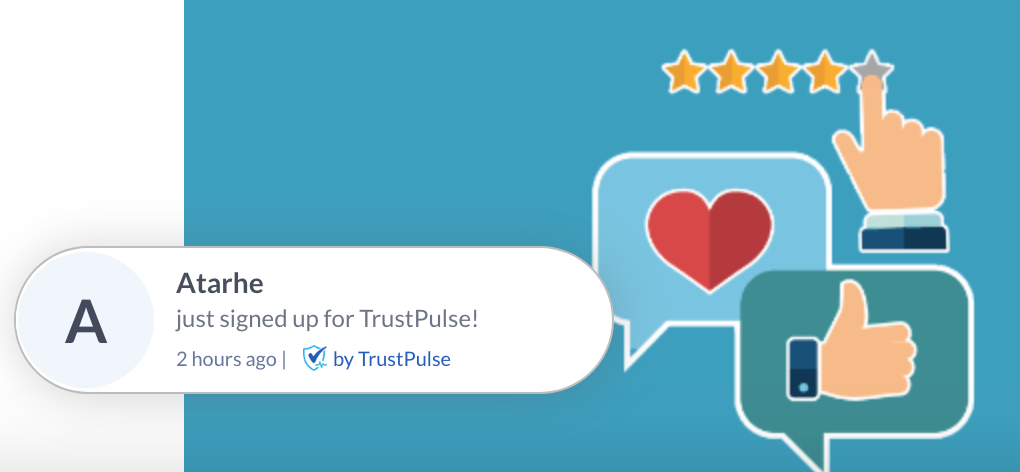
7. Optimize
Test and optimize your push notifications to increase your subscribers. Test different types of notifications, opt-in prompts and headlines, channels, and delivery schedules to see what works best for your specific audiences.
A good starting point for optimization is the opt-in prompt, as it’s the first point of interaction with users. The best opt-in prompts emphasize the high value that opting in provides and incentivize subscriptions.
They should also be highly visible and timely. Give your visitors some breathing room as they explore whether your content is worth subscribing to. Browser prompts are typically shown after 5 seconds on a desktop and after 10 seconds on a mobile device. If they see that your site provides value for them, your request becomes a service to them, not an annoyance.
High-performing apps in the 90th percentile and up across different industry verticals have opt-in rates above 50%. Business, charity, and travel apps have opt-in rates of around 70%.
For instance, the Hopper app analyzes billions of flight prices daily to predict how prices will change and tells users when to buy their tickets. The app can predict if a user should buy their ticket now or wait based on future price predictions.
If the user should wait, the user can press “watch,” and the app literally watches flight prices until they reach the expected good deal range, which is considered a historically great price, before the user’s departure date. Then, the app sends the user a push notification to buy.
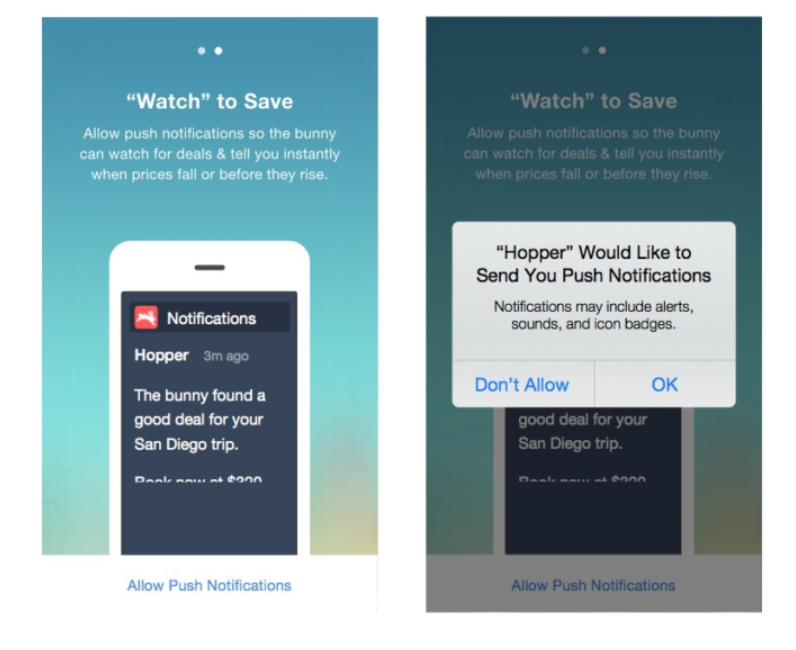
The airfare-predictor app shows users the value they’ll receive by allowing Hopper to send them push notifications in a respectfully inviting manner. Their brand messaging is personified by a bunny and uses powerful language (“instantly”) to keep their branded message direct and persuasive.
8. A/B Test
A/B testing, or split testing, is the comparison of different variations of your push notifications to see which one performs better. These tests are sent to randomly selected smaller groups before the winning version is sent to the rest of the relevant users.
Here is a simplified A/B test process:
- Suppose you have a subscriber list of 5,000 users that you want to receive a certain push notification. Divide this list randomly into two, giving you now two lists of 2,500 users each.
- Select either of the lists and, again, divide this into two (or more, depending on how many tests you intend to have).
- Send your A/B test versions and wait for the results to come in over a specified period. This is typically from an hour to 24 hours.
- After the results are in, send the version that performed the highest to the remaining larger list of 2,500 users.
The key thing to remember with A/B testing is to test one variable at a time to make sure the results are based only upon that one variable.
If you test for emojis while testing for humor in content at the same time, you will not know which of the two variables contributed to the increase in engagement.
Variables you can test for are typically:
- Action buttons (compare notification action button vs. default notification click and see which converts better)
- Coupon codes (whether sending coupon codes with push notifications or creating QR codes results in higher conversions)
- Images (compare photos vs. GIFs vs. emojis in rich push notifications)
- Humor (sensitivity testing per user segment)
- Personalization (test a personalized message vs. an unpersonalized one)
- Timing (testing for different times of the day and time zones for best-sending push notifications)
- Wording (test the same message but worded differently)
9. Make It Mobile-Optimized
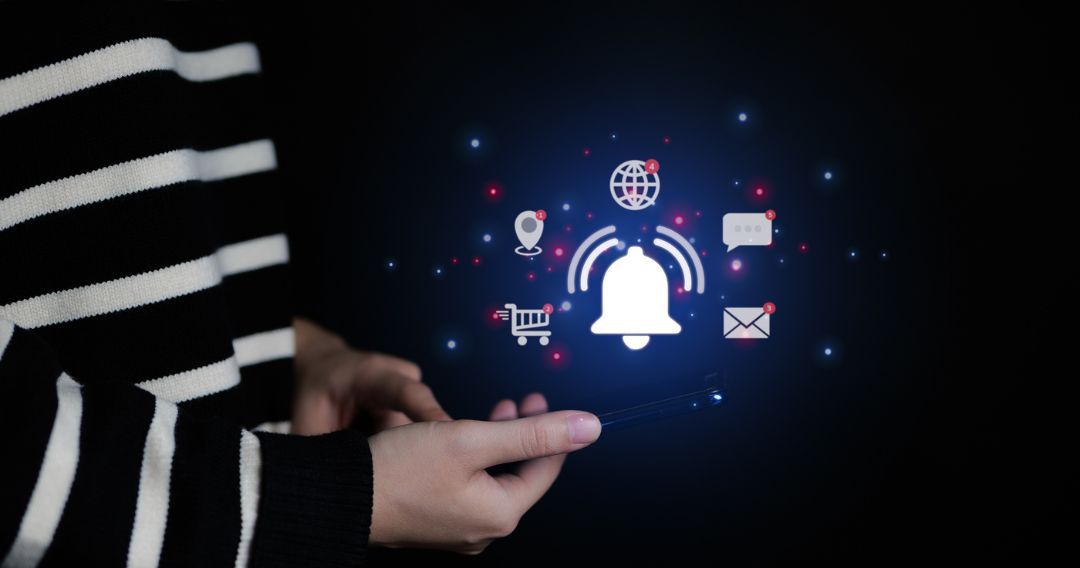
Since 80% of all push notification subscribers are mobile users, mobile optimization is critical. Make sure your notifications are mobile-friendly, including screen size and load times.
Additionally, make sure your notifications are properly formatted, simple to read, and easy to interact with on a mobile device by using clear and concise language. Make it personal with your brand’s unique voice, and convey a sense of urgency.
Interestingly, in the use of words in pushing promotions, variations of “earn” (“earn cash back,” “earn points”) have higher engagement rates than “save.”
10. Analyze Results and Improve On Them
Analytics is a crucial tool for growing the number of people who receive push notifications. Use analytics to monitor the effectiveness of your push notifications and pinpoint areas for development.
Monitoring engagement numbers is particularly critical for enhancing your push notification strategy. Pay attention to indicators such as click-through rates (CTRs), conversion rates, and unsubscribe rates. These indicators can help you fine-tune your notification strategy and make better data-driven decisions.
FAQs
1. What is the average subscription rate for push notification subscriptions?
Overall, push notifications’ opt-in rate is around 60%, with medium opt-in rates for iOS devices at 51% and for Android devices at 81%. Subscribers can help you vastly increase this rate.
2. What time is best to send push notifications?
It depends on your users’ preferences and devices as well as your industry. But, generally, it’s in the evenings after work and on Tuesdays and Sundays.
3. How many push notifications is too many?
This depends on your industry, but a rule of thumb is to send no more than two push notifications per day and, at most, five per week. An average of one notification a day works better.
Increasing Push Notification Subscribers
Developing a solid push notification subscriber list takes time and effort, but it is well worth it in the end.
You can gain more push notification subscribers and make the most of your well-crafted push notification campaigns by providing reasons to subscribe, segmenting your audiences, personalizing your messages, perfecting your timing, incentivizing opt-ins, using social proof, and optimizing your messages.
Remember to always test and improve your notification approach, as well as monitor engagement numbers, to ensure you’re providing the greatest possible experience for your subscribers.
By following these top ten proven and effective tips on how to increase your push notification subscribers, you can establish a vibrant and active community of subscribers that keeps growing over time as your business scales.
